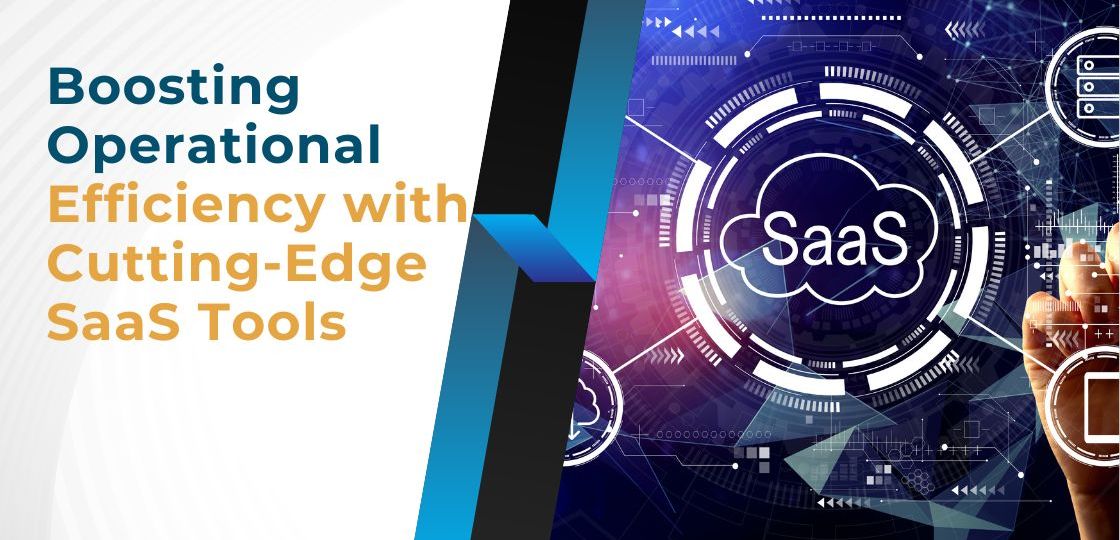
In an increasingly complex business landscape, maintaining efficient operations has become pivotal for organizations to sustain growth and profitability goals. However, many still rely on fragmented legacy systems and manual processes that hamper productivity and insight. Modern cloud-based SaaS solutions focused specifically on streamlining operations now provide a path to transformation.
By centralizing data, automating cross-functional workflows and providing real-time analytics, cutting-edge operational SaaS tools drive significant efficiency gains while also enhancing agility and scale. This article highlights key ways operations-focused SaaS solutions are creating competitive advantages.
Cutting-Edge Capabilities of SaaS
By leveraging cloud infrastructure, operational SaaS employs several differentiators from traditional solutions:
Unified Data Platforms
Owning the primary system of record for core operations data, SaaS tools eliminate silos. Ranging from customer to inventory to financials and more, unified datasets enable enterprise-wide analytics.
Intelligent Process Automation
Built-in integration capabilities, configurable low-code workflows spanning applications and automation enable standardized and enhanced processes while lowering manual efforts.
Continuous Analytics and Insights
Immediate operational data visibility through interactive web and mobile dashboards provides access to analytics-driven insights in real-time rather than batch latency.
Unlocking Efficiency through Workflow Optimization
A core opportunity is using SaaS to optimize cross-application workflows, eliminating wasted time through automating repetitive administrative tasks. Built-in connectors between platforms like ERP, HCM and CRM systems streamline processes like employee onboarding, lead tracking, and inventory reconciliation.
SaaS tools apply rules-based logic to trigger related cross-system data exchanges, update fields, validate information and complete record creation without manual intervention. As tasks become automated, the productivity lift is substantial.
Limitations of Traditional Operational Environments
Before examining how SaaS drives efficiency, it helps to call out a few common operational frustrations:
- Scattered Systems and Data Silos: Core platforms like ERP, CRM, HCM and financials need to interconnect, resulting in separate data sets, visibility gaps and manual integrations. This hinders holistic insights.
- Barriers to Process Standardisation: Inconsistent workflows, procedures and data schemas across business units obstruct optimization opportunities from being applied at scale.
- Lack of Real-Time Visibility: Reliance on batch reporting and static dashboards leads to reactive decision-making due to lagging operational insights caused by information delays.
Strengthening Strategic Planning with Comprehensive Analytics
Beyond automating workflows, SaaS analytics reveal optimization opportunities through detailed analysis. Embedded reporting and interactive dashboards create single lenses into operations, synthesizing data from across business applications.
Trend analysis empowers a nuanced understanding of peaks and pitfalls across operational drivers. Granular filtering allows drilling down into dimensions like customer segments, regional variances, asset allocation, seasonal impacts and more. Broad yet granular analytics aids data-driven strategic planning.
Driving Decisions through Predictive Intelligence
Leading operational workflow-enhancing SaaS platforms are incorporating advanced analytics capabilities like machine learning and AI to enable predictive decision-making. By processing volumes of current & historical data, algorithms spotlight workflow areas prone to failures, quantify emerging risks and prescribe mitigation and steps for transformative improvements.
For example, predictive inventory modeling forecasts demand shifts. Supplier risk analysis identifies probabilistic supply chain issues.
This shift from reactive to proactive mindsets based on data-driven predictive intelligence allows organizations to get ahead of potential operational disruptions through:
- Automated notifications on anomalies including failures, exceptions and errors
- Machine learning pattern recognition and continuous enhancing of systems
- Simulation modeling for scenario planning and forecasting
- Predictive analysis and ‘informed’ recommendations
With integrated predictive analytics, SaaS solutions transform operations from responding to events to having the foresight to mitigate risks in advance. Leaders receive decision support to optimize staffing, inventory, logistics and capacity planning based on systematic data science versus gut instincts. Transformation leads to innovation. The next era of data-fueled predictive operational excellence beckons.
The Bottom Line
Tools purposefully built to streamline today’s complex business operations introduce game-changing capabilities to replace dated and fragmented legacy environments. As a cloud-based evolution custom-made for the digital age, cutting-edge SaaS lays the foundation for unlocking transformational efficiencies across critical workflows. The operational challenges of yesterday become the strategic advantages of tomorrow.
